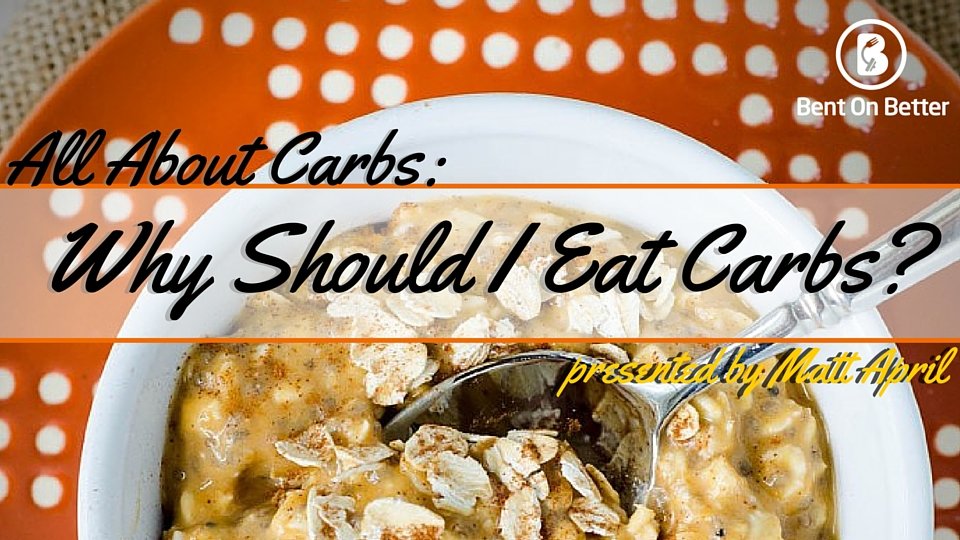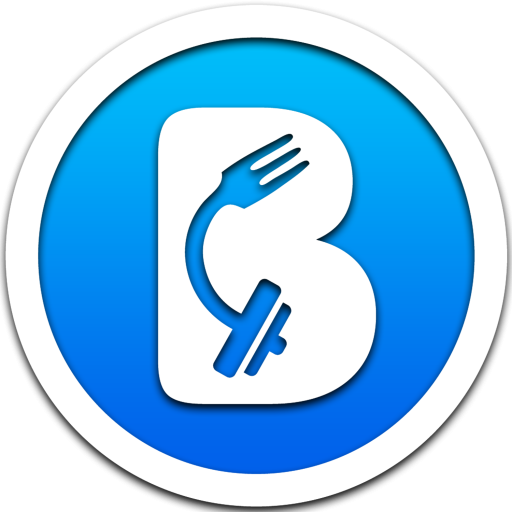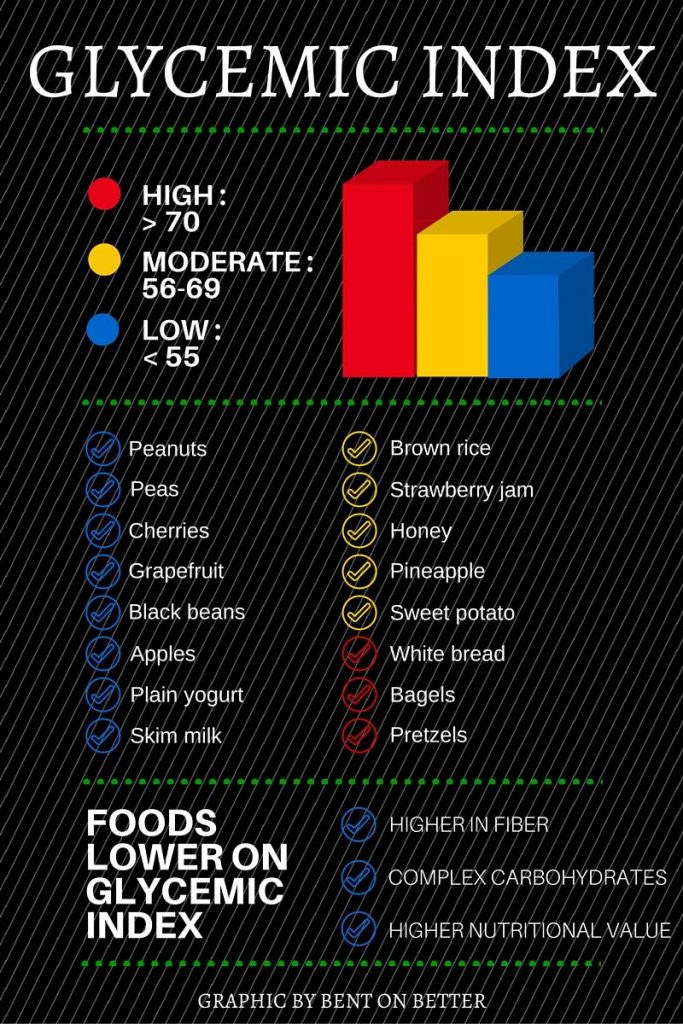Why Should I Eat Carbs
Why Should I Eat Carbs?
The Body Needs Carbs For:
– Energy
– Fitness and exercise performance
– Fat loss
– Muscle gain
– Regulating the digestion and utilization of protein and fat

Why Should I Eat Carbs..?
Today I want to talk all about carbohydrates, also know as carbs. To start this post, I want to make sure you realize carbs are not the root of all evil (which most of us tend to think when we are told go on a low carb diet if you want to lose weight). But I do want to note that not all carbs are created equal, and the same goes for fats and proteins, but I will talk more about this later.
As I’m sure you’re well aware, carbohydrates are your body’s primary source of energy. But before I go any further into why you should eat carbs, let me give you a quick definition of carbs.
“A carbohydrate is any one of various substances found in certain foods (such as bread, rice, and potatoes) that provide your body with heat and energy and are made of carbon, hydrogen, and oxygen1.” One gram of carbohydrate yields 4 calories2.
Digestion, Absorption, and Utilization
Carbohydrates can be put into three main categories: simple, complex, and fiber. Simple carbs are generally classified as sugars, but the scientific terminology for a simple carb can be classified as either a monosaccharide or a disaccharide. A monosaccharide is a simple sugar unit that is typically used to make starches (the storage form of carbs in plants) and glycogen (the storage form of carbs in the human body). Monosaccharides include glucose, fructose, or galactose. Disaccharides are two sugar units and include sucrose (table sugar), lactose (sugar from milk), and maltose3. Then of course we have those long chain monosaccharides called polysaccharides. These guys are usually found in foods that are full of starch and fiber. These foods are often called complex carbs and are things like starchy plants, seeds, and roots. Some examples of simple carbs are honey and fruit, which are easily digested. Disaccharides do require a bit more effort to digest, but not as much as starches. From the foods we eat, our bodies converts them into the simplest form of sugars, gluocse, and these sugars are then stored in our liver and muscles. Once the muscles and liver glycogen levels are full, the rest is stored as potential energy for later use.
The Glycemic Index and Foods
The glycemic index was created to show the effect in which ingested carbs raise blood sugar and the accompanying effect on insulin release in the body. The glycemic index was created based on ingesting carbohydrates on an empty stomach. Consuming carbohydrates along with protein and/or fats can alter the glycemic effect of certain foods. Foods lower on the glycemic index are good sources of complex carbohydrates, as well as high in fiber and have an overall high nutritional value.
Basic glycemic index chart:
High: > 70
Moderate: 56-69
Low: < 55
Fiber and Health
Dietary fiber, the part of the plant that cannot be digested by the human gut enzymes, is one of the greatest contributions to your overall health made by the carbs you eat. Eating a diet high in dietary fiber is associated with a lower risk of heart disease and even certain types of cancer4. But do you know what it probably the best thing about eating fibrous carbohydrates? I mentioned it just a moment ago; Fiber is an indigestible carbohydrate…so fiber goes in, heads to the stomach to fill you up, but instead of being digested, it passes through your small intestine, and goes right back out without making you gain unwanted weight in the form of body fat.
But Matt, I heard not ALL fiber is just passed through and expelled as poo…
Well, you’re right, some fiber remains behind where it is fermented and used as food for the gut bacteria.
Healthy gut bacteria = healthy you.
Either way, it’s a WIN!
The daily recommended intake of fiber is 25 to 38 g of fiber.
Carbohydrate-Intake Recommendations
So how much carbohydrate should you be consuming? Well, the goal with eating carbs is to keep your diet within the guidelines of health. According to the Institute of Medicine, the Acceptable Macronutrient Distribution Range of carbohydrate intake for adults is 45-65% of the daily total caloric intake. A diet containing between 6 and 10 g/kg per day of carbs (2.7 to 4.5 g/lb) is recommended. Complex carbs should cover a majority of your overall carb intake, so instead of reaching for the candy and the sweets, go for the fresh fruits and vegetables instead.
Carbs Before Exercise
Generally, if you want to live a healthy lifestyle, exercising on a completely empty stomach is not the best choice. But if you’re like me and you can’t workout on a full stomach, here’s what I recommend:
Consume a meal high in carbs 2-4 hours before working out for an hour. Doing this will allow for the appropriate time of digestion and gastric emptying before exercising5.
If you’re a morning gym-goer like me, this may not be feasible for you, so I recommend utilizing your blender and making something liquid based (high in carbs and with some protein). I love my Ninja Professional 900 Watts, it’s super powerful, comes with two sizes for blending, and even has two no-spill lids for on-the-go meals. This blender is by far the best bang for you buck…or rather, the best BLEND for you buck. HA! Click this link to see it in Amazon.
Fun fact time:
those of us who workout in the morning have up to 80% less muscle glycogen stores6 from our nighttime slumber.
Some research suggests your carb intake to be 1 to 4.5 g/kg carbs 4 hours before exercise and that overall performance improves by 15% when following this regiment. My suggestion: do what works best for you. If you’re trying to follow a diet that is on the lower end of the carbohydrate intake spectrum, consider using BCAAs as a pre-workout. BCAAs are the branched-chain amino acids used to help keep your muscles in top notch shape. To ensure you’re not using BCAAs with extra unwanted ingredients, use this link to see the ones I use personally, every day. You can read more about BCAAs and other amino acids by clicking here.
Carbs During Exercise
If you are going to be exercising for more than one hour, you should consider replenishing your muscle glycogen and glucose supplies during your workout. Consuming a carbohydrate along with water is an excellent way to achieve this task and can even help increase your exhaustion levels 20 to 60 minutes beyond someone who doesn’t consume carbs during the workout. It is recommended that endurance athletes consume 30 to 60 grams of carbs7.
My recommendation is drink a few gulps of your water bottle, then replace the missing liquid with some of your favorite sports drink (a couple ounces at most). This should be just fine for us regular gym goers who exceed the hour mark, but who are endurance athletes.
Carbs After Exercise
Consistently repeated days of strenuous exercise can take a toll on your body’s glycogen stores, so eating a high amount of healthy carbohydrates can help replenish these stores. But the timing of when you eat your carbs to help replenish your muscle glycogen stores is crucial to maximizing recovery.
To have the best results, you should consume 1.5 g/kg within the first 30 minutes of completing your exercise. Why? Because of the increased blood flow to the muscles and increased sensitivity of the cells to insulin.
The best post-workout post exercise meal is something high in carbohydrates and some lean and clean protein.
Carbs and Equality
As I mentioned in the beginning of this episode, not all carbs are created equally. An easy way to understand this is by taking a look at the glycemic index for assorted foods. When choosing carbohydrates and foods that contain carbohydrates you want to say on the lower end of the spectrum of the glycemic index. Foods that are in the moderate and high categories aren’t necessary terrible for you, but the nutritional value does dwindle away the higher you get on the glycemic index. For example, on the low side of the glycemic index you’ll find things like peas, cherries, grapefruit, black beans, apples, and even skim milk. On our way towards the middle of the glycemic index in the moderate category, we see foods like brown rice, strawberry jam, honey, pita bread, pineapple, and sweet potatoes. Not to say these things are terrible for you, but they will have a greater effect on your blood sugar and insulin levels. On the high-end of the glycemic index refined thing that light white bread, Lifesavers, bagels, french fries, pretzels, and Gatorade.
Although carbohydrates should make up the bulk of your diet, eating carbohydrates high in fiber and with greater nutritional value are your best bet. My simple rule of thumb is to eat 90% of the time things that are real food. Avoid anything processed 90% of the time. If you can’t grow it, hunted, or fish it, 90% of the time you probably shouldn’t eat it.
You’re a healthy and smart person…just look at you, you’re reading my blog, that means you value your health. But here’s the thing, I have to remind you that these tips are provided for your information and are not intended as medical advice. Please work with your health care professional to determine what’s right for you. Just remember, eating right starts with you.
[smart_track_player url=”http://traffic.libsyn.com/bentonbetter/Why_Should_I_Eat_Carbs.mp3″ title=”All About Carbs – Why Should I Eat Carbs?” artist=”Bent On Better” image=”https://www.bentonbetter.com/wp-content/uploads/2015/06/HEALTHFITNESS.png” social=”true” social_twitter=”true” social_facebook=”true” social_gplus=”true” social_linkedin=”true” social_pinterest=”true” ]
Thanks for joining me again this week, I’m glad you decided to come back. If you’re new to the blog, welcome! Visit my Start Here page to get the low down on this whole Bent On Better thing.
If you have any questions you’d like addressed personally, feel free to email me at [email protected].
Lastly, don’t forget to subscribe to the show on iTunes to get automatic updates, available for both iOS and Android on Stitcher!
Photo by Fresh April Flours
1. Merriam-Webster. Merriam-Webster, n.d. Web. 14 Oct. 2015.
2. Clark, Micheal, Scott Lucett, and Rodney J. Corn. “Chapter 17/ Section 3.” NASM Essentials of Personal Fitness Training. Philadelphia: Wolters Kluwer Health/Lippincott Williams & Wilkins, 2008. 477. Print.
3. Clark, Micheal, Scott Lucett, and Rodney J. Corn. “Chapter 17/ Section 3.” NASM Essentials of Personal Fitness Training. Philadelphia: Wolters Kluwer Health/Lippincott Williams & Wilkins, 2008. 477. Print.
4. Clark, Micheal, Scott Lucett, and Rodney J. Corn. “Chapter 17/ Section 3.” NASM Essentials of Personal Fitness Training. Philadelphia: Wolters Kluwer Health/Lippincott Williams & Wilkins, 2008. 478. Print.
5. Clark, Micheal, Scott Lucett, and Rodney J. Corn. “Chapter 17/ Section 3.” NASM Essentials of Personal Fitness Training. Philadelphia: Wolters Kluwer Health/Lippincott Williams & Wilkins, 2008. 480. Print.
6. Clark, Micheal, Scott Lucett, and Rodney J. Corn. “Chapter 17/ Section 3.” NASM Essentials of Personal Fitness Training. Philadelphia: Wolters Kluwer Health/Lippincott Williams & Wilkins, 2008. 480. Print.
7. Clark, Micheal, Scott Lucett, and Rodney J. Corn. “Chapter 17/ Section 3.” NASM Essentials of Personal Fitness Training. Philadelphia: Wolters Kluwer Health/Lippincott Williams & Wilkins, 2008. 481. Print.

